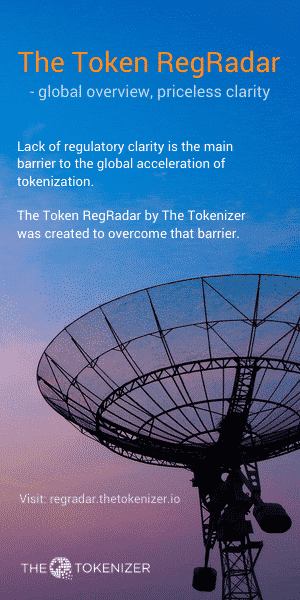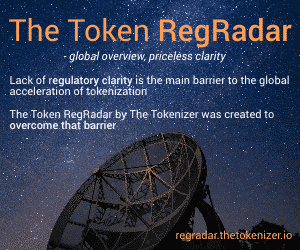It is a fact that from 2018, institutional money has started to flow into the crypto sector at an increasing pace. I wrote about it here and this was recently confirmed by Coinbase CEO. To remain bullish on the sector though, it is vital to understand whether this money inflow will continue in the short to medium term and what are the main reasons driving the inflow.
Articles wrote by Andrea Bianconi
There are different reasons. I have analyzed in this article why bitcoin is, by all means, a digital version of gold and the reasons why the whole crypto sector is worth investing in. But the fact that an asset class is a good investment opportunity for any number of reasons, does not necessarily mean that investors will buy it. There must be a catalyst to drive money into that assets class. Then we must understand why the big money, which is on the verge of what Ray Dalio defines a paradigm shift in investing, will be inevitably driven into precious metal and — my take — into the crypto sector as well.
It is not about making “predictions” — no one has the crystal ball and most times it is only a matter of luck and good timing to get it right or wrong. It is rather about analyzing the macroeconomic environment which drives money into certain assets and out of others. Many observers, analysts and professional investors are betting that the Fed will lower interest rates because a recession is looming. I do not know if a recession will come or not. No one knows for sure, it is just speculation. Regardless, this is irrelevant in our analysis. There are real and more pressing macroeconomic reasons that will be driving — in the medium-term — US interest rates down and institutional money into under-allocated investment sectors such as gold and crypto.
To make a long and complex story short, there is a US Dollar liquidity problem which is apparent and it is — for now — discussed among few restricted circles of macro investors, by the likes of Jeffrey Snider of Alhambra Partners, Luke Gromen and Erik Townsend of Macrovoices. In this interview, Luke Gromen clarifies what are the reasons for the US$ liquidity shortage and the consequences of that. I will try to summarize and oversimplify a quite complex issue and a 40min interview into a few lines:
- Since 20.3.19 Effective Fed Funds Rate (EFFR i.e the actual market interest rate that banks charge each other for overnight loans) stays above the Interest on Excess Reserves (IOER i.e the interest rate paid to banks for the deposits they hold with the Federal Reserve above those required by banking regulation). This should not happen and it is a sign of the FED losing control of the price of money.
- Regardless of the concurring factors, of the numerous possible explanations and of the proposed solutions, this is practically a sign of lack of US$ liquidity, very likely a lack of bank balance sheet capacity. Why is this happening though? One major reason is because primary dealers have been financing the US$ government debt (i.e buying US Treasuries) at an increasing rate, so much that the latest data points to 3 banks — Citibank, JPMorgan and Bank of America — holding together 25% of the US debt issued in 2018 (unfortunately I could not verify this statement with documented evidence). The consequence might be that the EFFR remains above IOER because US banks are choking on US debt and have no liquidity left.
- This further indicates that the US private sector is running out of capacity to finance the US deficit without intervention from the FED to restore needed balance sheet capacity and liquidity.
- The critical and more pressing issue is therefore not the state of the economy and the possible recession, but rather a US$ liquidity crisis generated by the US FISCAL problem which needs to be urgently addressed. If foreigners (mostly China) slow down their purchase of US Treasuries and the US private sector is running out of capacity, then the FED is obliged to step in and start again “printing money” possibly for an unlimited QE.
The consequences of the above construction are:
- The FED is cornered. The US stock market is basically the whole US economy and some, as it represents 153% of GDP. Even a mild recession and a drop in the market capitalization of US stocks will mean that the US government might start missing payment obligations or will have to sharply cut down its military spending and other key expenses.
- Therefore the FED is obliged to cut rates and start again a massive money printing exercise. But differently from 2008 — when the exercise was deemed to be temporary — this time we know for sure that it will be not. It is becoming a permanent exercise to inflate assets and debase fiat currencies. And, like before, it is going to be global. Add that Japan and China continue to do so, the ECB also, Germany recently announced that it is ready to run a deficit if needed and that Trump presses the FED in that direction and we have all the most important indicators to point firmly in only one direction: more global money printing is coming and this will bring more fiat currency debasement and more real asset price inflation.
The winners in this scenario will be risk assets, precious metals and the crypto sector, with bitcoin being the main beneficiary. The timing of it is much harder to guess.
But regardless of the timing, the macroeconomic fundamentals highlighted above are the most powerful catalyst that will drive the big money towards precious metals and crypto in the foreseeable future.
Friday 23 August 2019 at Jackson Hole the FED might dispel the doubts, or it may not…

https://www.bianconiandrea.com/
https://www.linkedin.com/in/andrea-bianconi-blockchain-law/
https://medium.com/@andreabianconi
http://thinkblocktank.org/
http://www.untitled-inc.com
Legal Disclaimer: This website and the information contained herein is for general guidance only and it does not constitute legal advice. As such, it should not be used as a substitute for consultation with lawyers on specific issues. All information in this paper is provided “as is”, with no guarantee of completeness, accuracy, timeliness or warranty of any kind, express or implied.
Investment Disclaimer: The website and the information contained herein is not intended to be a source of advice or credit analysis with respect to the material presented, and the information and/or documents contained in this website do not constitute investment advice.
Photo by Lucas Benjamin on Unsplash
More Articles:
What Tudor Jones’ bitcoin investment means for other institutional investors and for bitcoin







